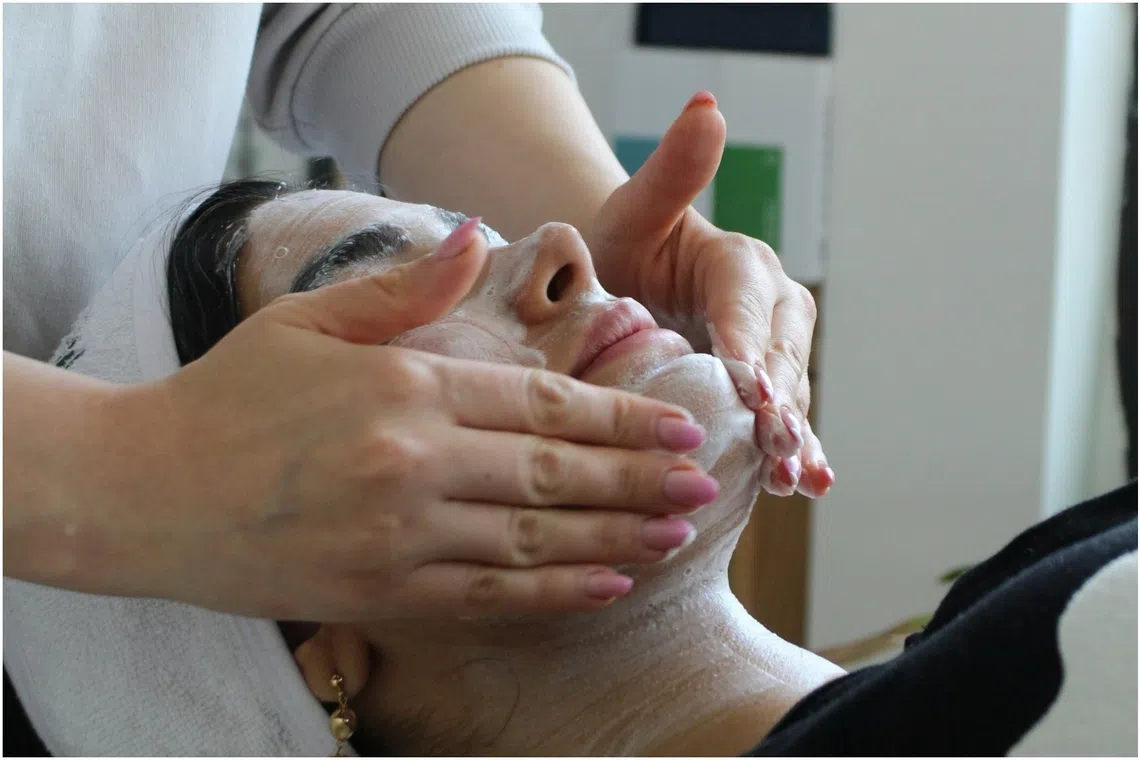China’s consumer price wars are coming for botox and skincare
Sign up now: Get ST's newsletters delivered to your inbox

So-Young International has launched a chain of 33 clinics across major mainland cities that offer cut-price procedures. This could spark a price war in China’s estimated US$38 billion medical aesthetics sector.
PHOTO ILLUSTRATION: UNSPLASH
Follow topic:
BEIJING – First, the deflation sweeping China’s economy came for its cars and fast food. Now, it is coming for Botox and photorejuvenation.
So-Young International has launched a chain of 33 clinics across major mainland cities that offer chemical peels for 149 yuan (S$27) and hydrating skin boosters for 399 yuan, bringing the cost of these procedures to new lows in China. Still, the company sees further room to cut prices, approaching the cost of treatments in South Korea, the global benchmark for cut-rate cosmetic work.
The move could spark a price war in China’s estimated US$38 billion (S$49 billion) medical aesthetics sector, mirroring the dynamics across consumer industries that have given Chinese shoppers 50-cent dinners and US$4,200 electric vehicles.
Already, e-commerce giant JD.com has opened two Beijing cosmetic clinics that undercut even So-Young on some procedures. Although JD.com’s presence is small, a major e-commerce platform’s entry foreshadows how crowded the space could become.
So-Young aims to not only undercut the local industry, but also ultimately offer low-enough prices to stop Chinese shoppers from travelling to South Korea for procedures. Products like Botox offered in South Korean clinics are priced as low as around US$30 for 100 units – or about 20 per cent of what So-Young charges. Chinese customers, though, would have to shell out at least several hundreds of dollars more for flights and hotel stays, potentially making the overall cost of a cosmetic trip to South Korea higher than getting the injection in Shanghai or Beijing.
The average So-Young customer spends 2,000 yuan per visit to its clinics, which specialise in minimally invasive cosmetic treatments, chief executive officer Jin Xing said in an interview.
Typical appointments in the wider cosmetic sector that also includes plastic surgery run 6,500 yuan, according to a Deloitte report, while mean costs can soar to 17,000 yuan at clinics paying higher commissions to booking agents.
“As we increase store density and bring prices closer to those in Korea, I believe more and more consumers will choose to receive these treatments domestically,” Mr Jin said. “We’re now seeing many consumers getting used to having a skin booster injection every one or two months and, similarly, undergoing photorejuvenation sessions every one or two months. At that point, convenience may become extremely important.”
Chinese drawn by quality, safety and competitive pricing accounted for 22 per cent of the record-high 1.17 million foreigners who visited South Korea for medical treatments in 2024, the country’s Health and Welfare Ministry said. South Korea’s beauty and personal-care industry is projected to reach US$15.7 billion in revenue in 2025, according to data from Statista, with skincare the largest segment at US$9.7 billion.
So-Young plans to lean on convenience to entice customers who have made treatments like Botox part of their routine, Mr Jin said. The company aims to have 50 clinics in China by year end and 1,000 within eight years – enough outlets in commercial hubs to enable customers to reach one within 15 minutes.
Ultra-cheap filler
The Beijing company is able to keep prices low thanks to a strategy of mass procurement, along with marketing expenses that have been reduced through widespread brand awareness in China after more than a decade in the cosmetics booking sector, Mr Jin said.
It has also eliminated costly middlemen by striking a series of exclusive distribution deals with suppliers for some Chinese skin filler products – and even makes some of its own treatment products, partnering with South Korean supplier Dongbang Medical in 2021 to manufacture injectables locally.
One such product is Chinese-made facial filler Loviselle – heralded locally as the “baby face” filler for the smoothness it can achieve – which So-Young charged at one-third of the manufacturer’s recommended retail price in June.
Slashing prices for cosmetic procedures, however, may prove to be a double-edged sword, especially as internet giants JD.com, Meituan and Douyin muscle in on So-Young’s core booking business, pressuring its margins. Chinese companies’ continuous price cuts to lure customers have led to a state of “involution”, in which hyper-competition is fuelling ever-diminishing returns.
The company posted losses in three of the past four years and is expected to stay in the red in 2025, according to data compiled by Bloomberg. This is despite beauty clinic revenue surging 426 per cent in the second quarter, overtaking its original reservation platform for the first time.
Also, while the Loviselle offer excited some beauty fiends in search of a deal, widespread discussion erupted on Chinese social media over whether the discounted treatment had worked well.
Scepticism over ultra-cheap procedures comes amid wider distrust from Chinese consumers and some doctors about whether the quality of locally made medical and health products – from generic medicine to infant formula – measures up to that of more expensive foreign counterparts.
The potential for something to go wrong could encourage even more frugal clients to continue seeking out treatments in South Korea, or costlier but proven local boutique clinics. BLOOMBERG

